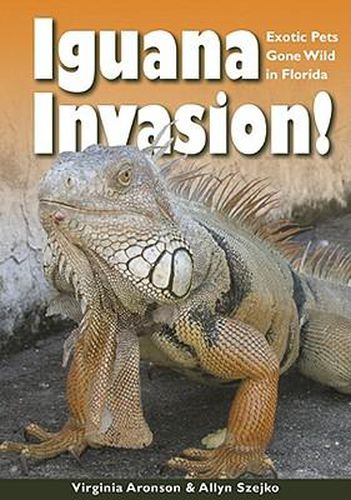Readings Newsletter
Become a Readings Member to make your shopping experience even easier.
Sign in or sign up for free!
You’re not far away from qualifying for FREE standard shipping within Australia
You’ve qualified for FREE standard shipping within Australia
The cart is loading…






Burmese Pythons are crawling across Florida from Lake Okeechobee to Key Largo. Hundreds of thousands of Green Iguanas relax along canals and on pool decks around the southern part of the state. And other non-native animals like seven-foot Nile Monitor Lizards and poop-tossing Rhesus Monkeys are scaring Florida residents.
How did all these animals get into our public parks, canals and lakes, undeveloped areas and suburban yards? The unfortunate truth is, kids and their parents are partly to blame. Parents are purchasing cute baby animals for their kids, then abandoning the unwanted adult pets in the Everglades and anywhere else they think the animals might survive on their own. Some species are indeed surviving-and they are breeding wildly, becoming nuisance species.
This book provides identification information for the most common exotic species and has the answers to these questions:
What are these animals and how did they get here? What is a humane way to get rid of them? When should a trapper be called? Can I feed them? Are they dangerous? What is the effect of all these exotics on the environment? What can we do to help with the problem?
Readers learn how to stay safe, be humane, and appreciate nature-and are encouraged NOT to purchase exotic animals as pets.
Recommended by the National Association of Science Teachers
$9.00 standard shipping within Australia
FREE standard shipping within Australia for orders over $100.00
Express & International shipping calculated at checkout
Burmese Pythons are crawling across Florida from Lake Okeechobee to Key Largo. Hundreds of thousands of Green Iguanas relax along canals and on pool decks around the southern part of the state. And other non-native animals like seven-foot Nile Monitor Lizards and poop-tossing Rhesus Monkeys are scaring Florida residents.
How did all these animals get into our public parks, canals and lakes, undeveloped areas and suburban yards? The unfortunate truth is, kids and their parents are partly to blame. Parents are purchasing cute baby animals for their kids, then abandoning the unwanted adult pets in the Everglades and anywhere else they think the animals might survive on their own. Some species are indeed surviving-and they are breeding wildly, becoming nuisance species.
This book provides identification information for the most common exotic species and has the answers to these questions:
What are these animals and how did they get here? What is a humane way to get rid of them? When should a trapper be called? Can I feed them? Are they dangerous? What is the effect of all these exotics on the environment? What can we do to help with the problem?
Readers learn how to stay safe, be humane, and appreciate nature-and are encouraged NOT to purchase exotic animals as pets.
Recommended by the National Association of Science Teachers